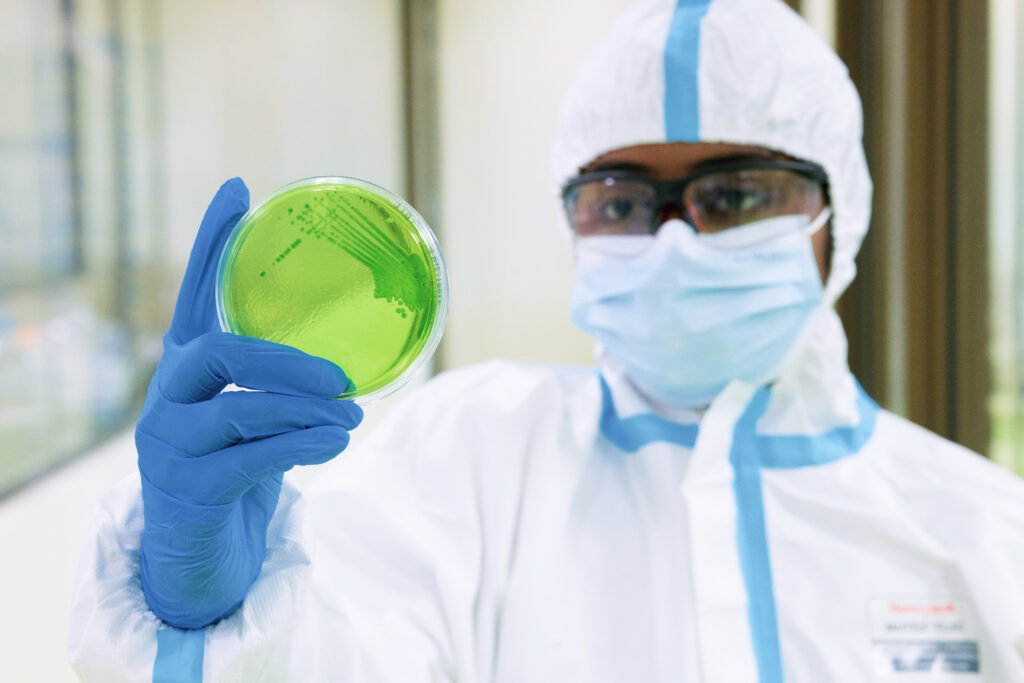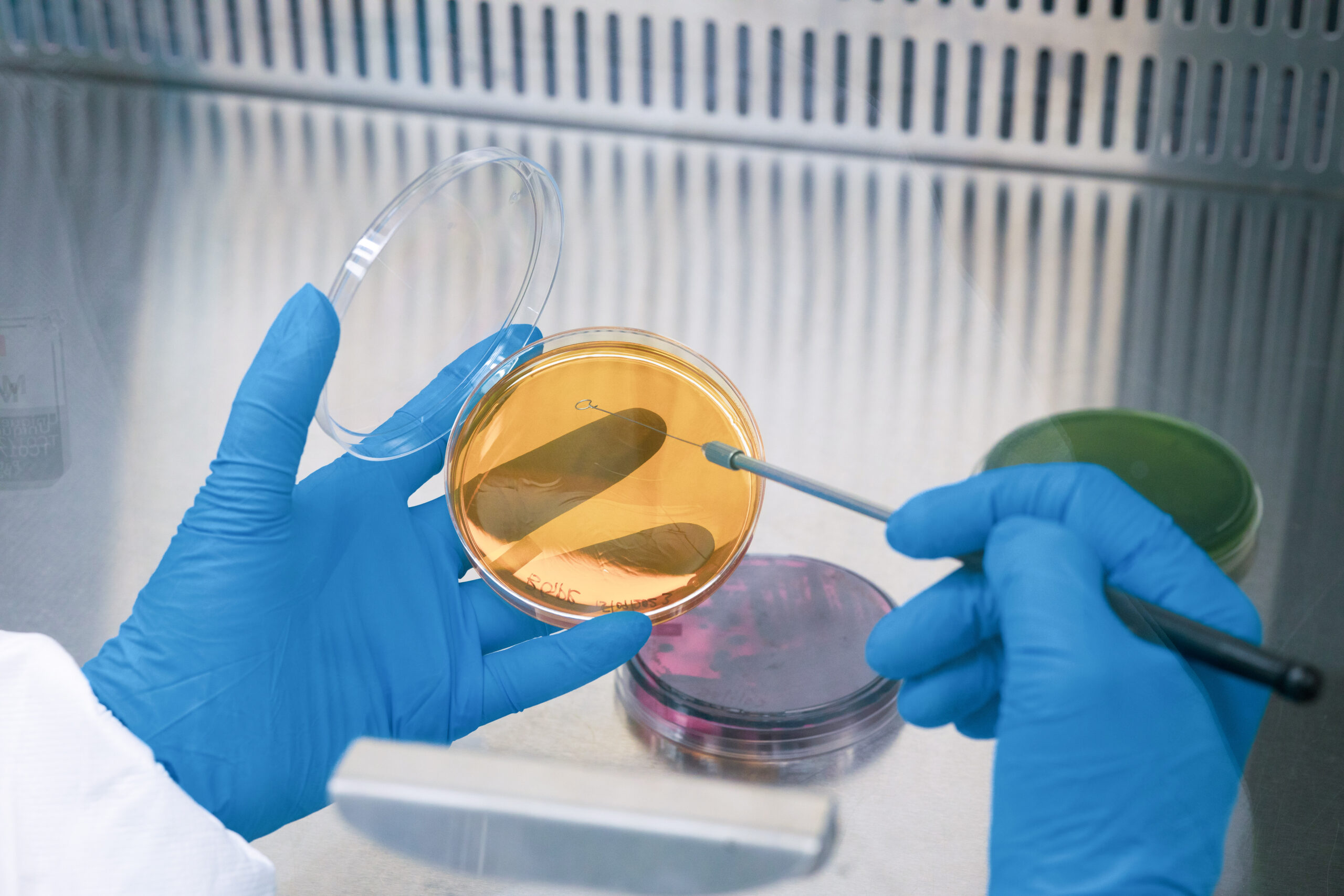Microbiology
Accredited Microbiology Services
At Bioscience Research Foundation (BRF), we pride ourselves on our commitment to quality and regulatory compliance. Our microbiology services, as well as all of our other preclinical services, are performed in accordance with the highest industry standards.
We are accredited by the NGCMA as a GLP compliant laboratory, National Accreditation Board for Testing and Calibration Laboratories (NABL) and the Association for Assessment and Accreditation of Laboratory Animal Care International (AAALAC), ensuring that our facilities and practices meet strict quality standards.
Our lab operates under Good Laboratory Practice (GLP) guidelines, which ensure that our studies are conducted in a rigorous, systematic, and transparent manner. Our GLP compliance is recognized by regulatory agencies worldwide, including the US Food and Drug Administration (FDA) and the European Medicines Agency (EMA).
At BRF, we are committed to continuous improvement and staying in line with the latest industry standards and best practices. Our accreditations and certifications demonstrate our commitment to quality, and we are proud to offer our clients microbiology services that meet the highest standards of quality and regulatory compliance.
Contact us today to learn more about our microbiology services and how we can help support your drug discovery and development needs.
Our Lab
Overview of services
- Culture-based identification of bacteria, fungi, and yeast species
- Molecular techniques for microbial identification (e.g., PCR, DNA sequencing)
- Phenotypic and biochemical characterization of microorganisms
- OECD Guideline 107: Test No. 107 – Partition Coefficient (n-octanol/water): Shake Flask Method
- ISO 7218:2007: Microbiology of food and animal feeding stuffs – General requirements and guidance for microbiological examinations
- Determination of the susceptibility of microorganisms to antimicrobial agents
- Minimum inhibitory concentration (MIC) testing
- Disk diffusion method (Kirby-Bauer method)
- Broth dilution method
- Etest method
- ISO 20776-1:2019: Clinical laboratory testing and in vitro diagnostic test systems
- Susceptibility testing of infectious agents and evaluation of performance of antimicrobial susceptibility test devices – Part 1: Broth microdilution reference method for testing the in vitro activity of antimicrobial agents against rapidly growing aerobic bacteria involved in infectious diseases
- Membrane filtration method
- Direct inoculation method
- Growth promotion testing of culture media
- ISO 11737-1:2018: Sterilization of health care products – Microbiological methods – Part 1: Determination of a population of microorganisms on products
- USP 71: Sterility
- Enumeration of viable microorganisms in pharmaceuticals, cosmetics, food, and water samples
- Total aerobic microbial count
- Total yeast and mold count
- Specific microorganism count (e.g., Escherichia coli, Staphylococcus aureus)
- ISO 4833-1:2013: Microbiology of the food chain – Horizontal method for the enumeration of microorganisms – Part 1: Colony count at 30 degrees C by the pour plate technique
- Detection and quantification of bacterial endotoxins in pharmaceuticals, medical devices, and other products
- Limulus amebocyte lysate (LAL) assay
- Chromogenic or turbidimetric methods
- USP 85: Bacterial Endotoxins Test
- Microbiological testing of air, water, surfaces, and equipment to assess cleanliness and microbial contamination
- Total viable count
- Detection of specific indicator organisms (e.g., Escherichia coli, Pseudomonas aeruginosa)
- Evaluation of product preservation efficacy against microbial contamination and growth
- Inoculation of products with specific microorganisms and monitoring their growth over time
- ISO 14698-1:2003: Cleanrooms and associated controlled environments – Biocontamination control – Part 1: General principles and methods
- ISO 14698-2:2003: Cleanrooms and associated controlled environments – Biocontamination control – Part 2: Evaluation and interpretation of biocontamination data
- OECD Guideline 471: Test No. 471 – Bacterial Reverse Mutation Test
- ISO 10993-1:2018: Biological evaluation of medical devices – Part 1: Evaluation and testing within a risk management process
- Microbial Quality Assurance:
- ASTM E2111-18: Standard Quantitative Carrier Test Method to Evaluate the Bactericidal, Fungicidal, Mycobactericidal, and Sporicidal Potencies of Liquid Chemical Microbicides
- OECD Guideline 473: In Vitro Mammalian Chromosome Aberration Test
- ISO 10993-3:2014: Biological evaluation of medical devices – Part 3: for genotoxicity, carcinogenicity, and reproductive toxicity
- Validation of cleaning and sanitization procedures
- Assessment of microbial control measures in manufacturing facilities
- Environmental monitoring of cleanrooms and controlled environments
- ASTM D5465-21: Standard Practices for Determining Microbial Colony Counts from Waters Analyzed by Plating Methods
- ISO 10381-1:2002: Soil quality – Sampling – Part 1: Guidance on the design of sampling programmes
- ASTM E2562-20: Standard Test Method for Quantification of Pseudomonas aeruginosa Biofilm Grown with High Shear and Continuous Flow using CDC Biofilm Reactor
- Microbial Challenge Testing for Medical Devices:
- ISO 22196:2011: Plastics – Measurement of antibacterial activity on plastics surfaces
- Water Microbiology Testing:
- ISO 6222:1999: Water quality – Enumeration of culturable microorganisms – Colony count by inoculation in a nutrient agar culture medium
- ASTM D5465-21: Standard Practices for Determining Microbial Colony


